Urban HCI
Main concepts
This pages is constantly under development and aims to summarize main concepts of Urban HCI Theory.
Overview of concepts in Urban HCI
The following list overview can be understood as a summary of the most important concepts that shape behaviour in public space. They are the main concepts which may be used to shape new media augmented public situations in an interdisciplanary team (supporting the communication in the synthesis process including Computer Scientists and Architects or Urban Designer) or for structuring an analysis process (e.g. in HCI research):
- 50x50 situation
- Environment types: plaza and walkway (throughway)
- Interface types: movable, fixed, and camera based
- Role types: performer, participant, and observer
- Display types: people as displays
- Space types: Activation Space (AS), Comfort Space (CS), Potential Interaction Space (PIS), Interaction Space (IS), Social Interaction Space (SIS), Gap Space (GS), Display Space (DS)
50x50 Situation
The theory of Urban HCI contrasts to Ubiqoutous Computing by simply limiting system design to a 50x50m setting. In that way the design thinking rather turns towards a situated design instead of universal. McCullough summarized this in [2] quite well. Universal Computing is anytime-anyplace, mostly portable, where context is location, instead of architecture, fast and far, uniform. Situated Computing in contrast is inter/re-active environment, integrated in the environment, where context is activity, slow and close, adapted. A more in depth discussion about Ubicomp and Urban HCI can be found in [4].
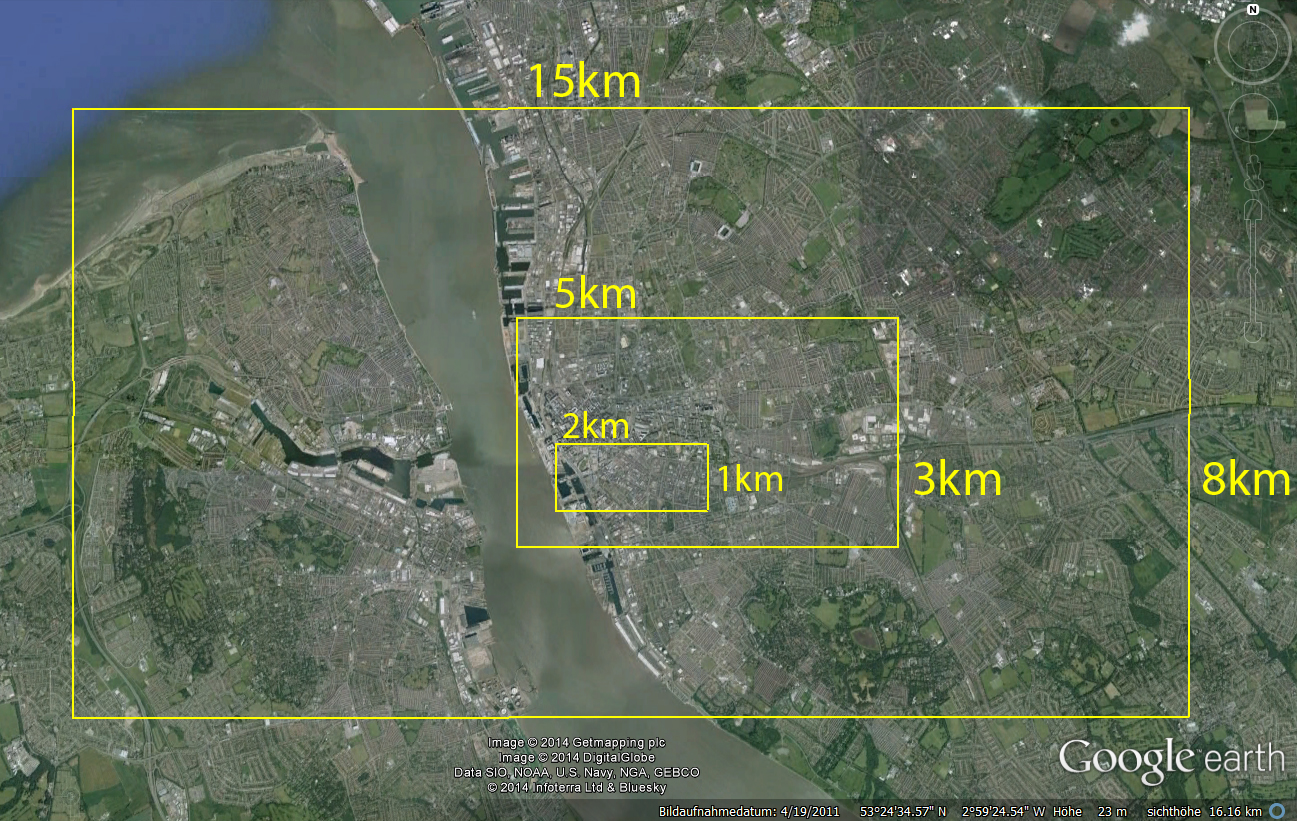
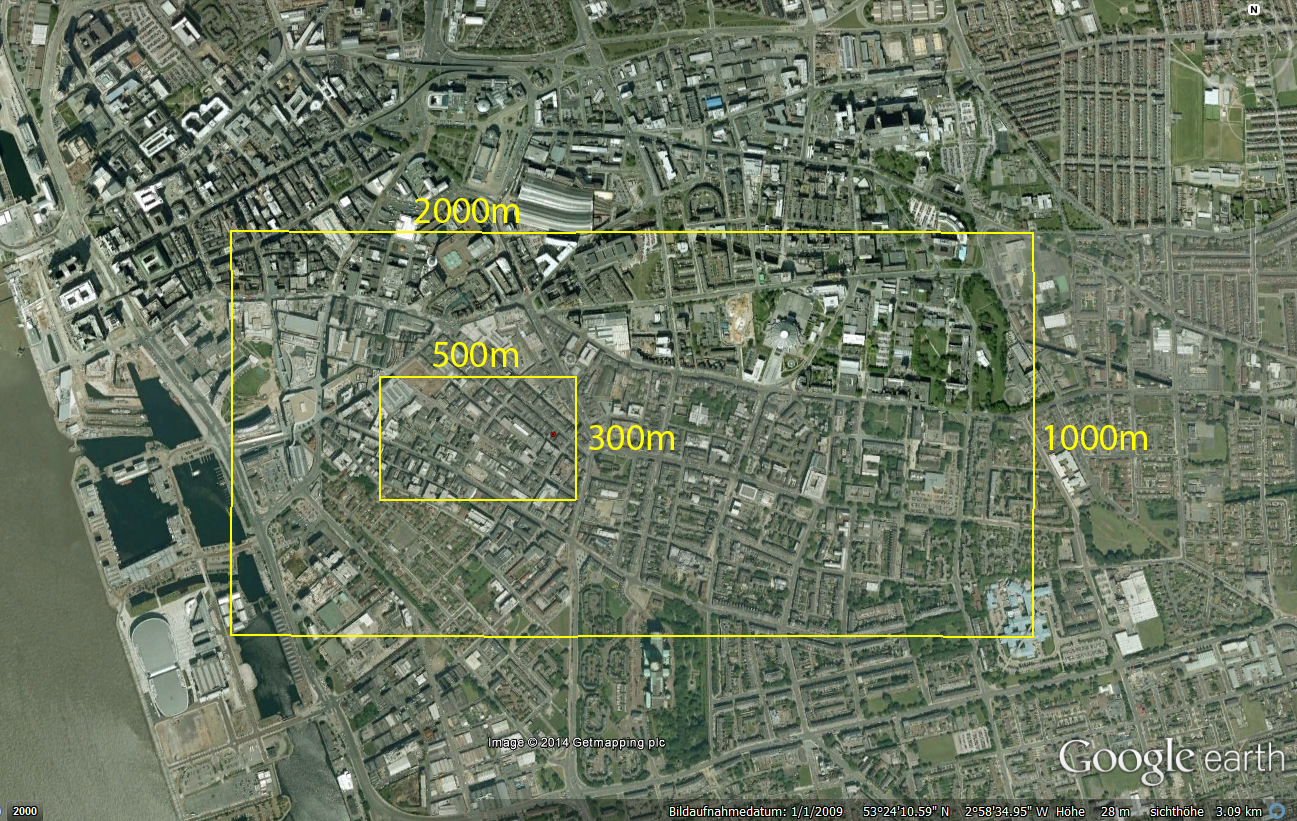
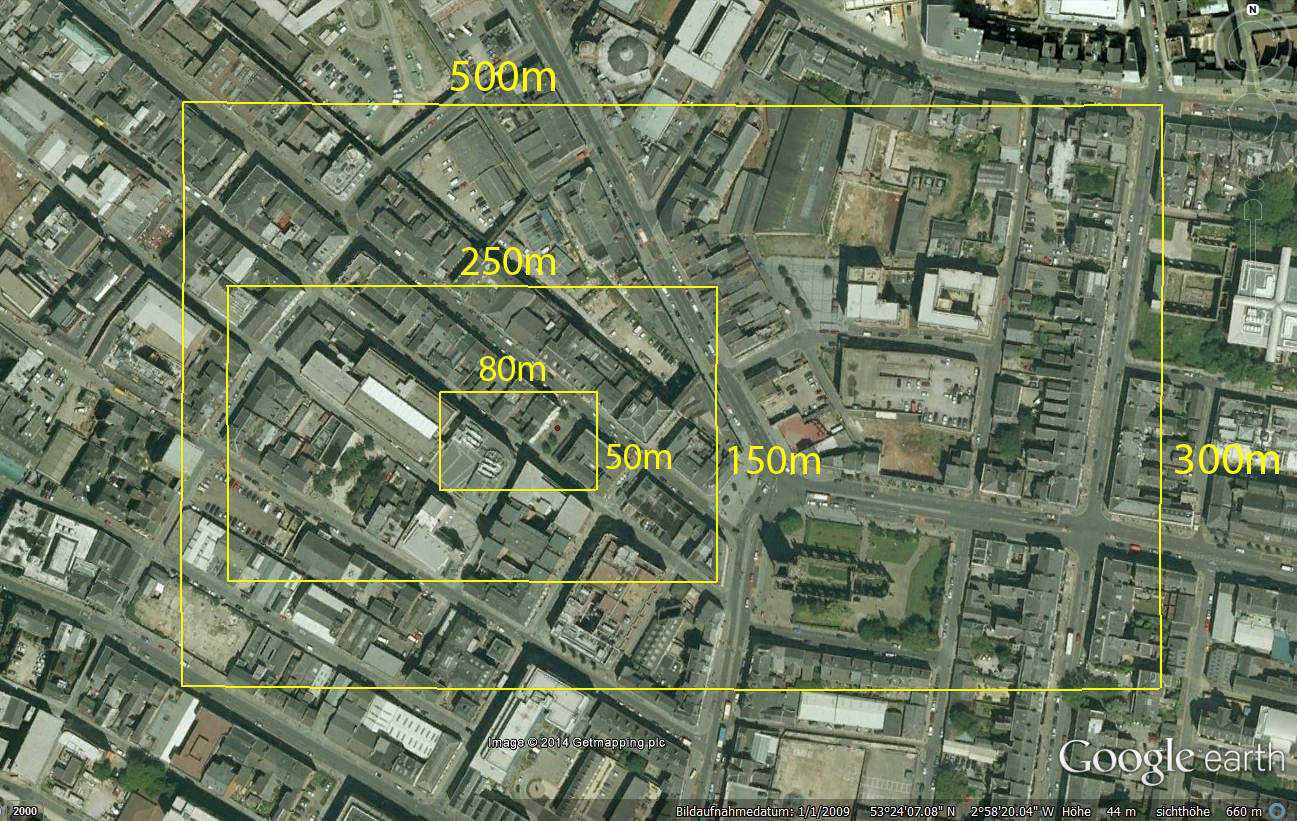
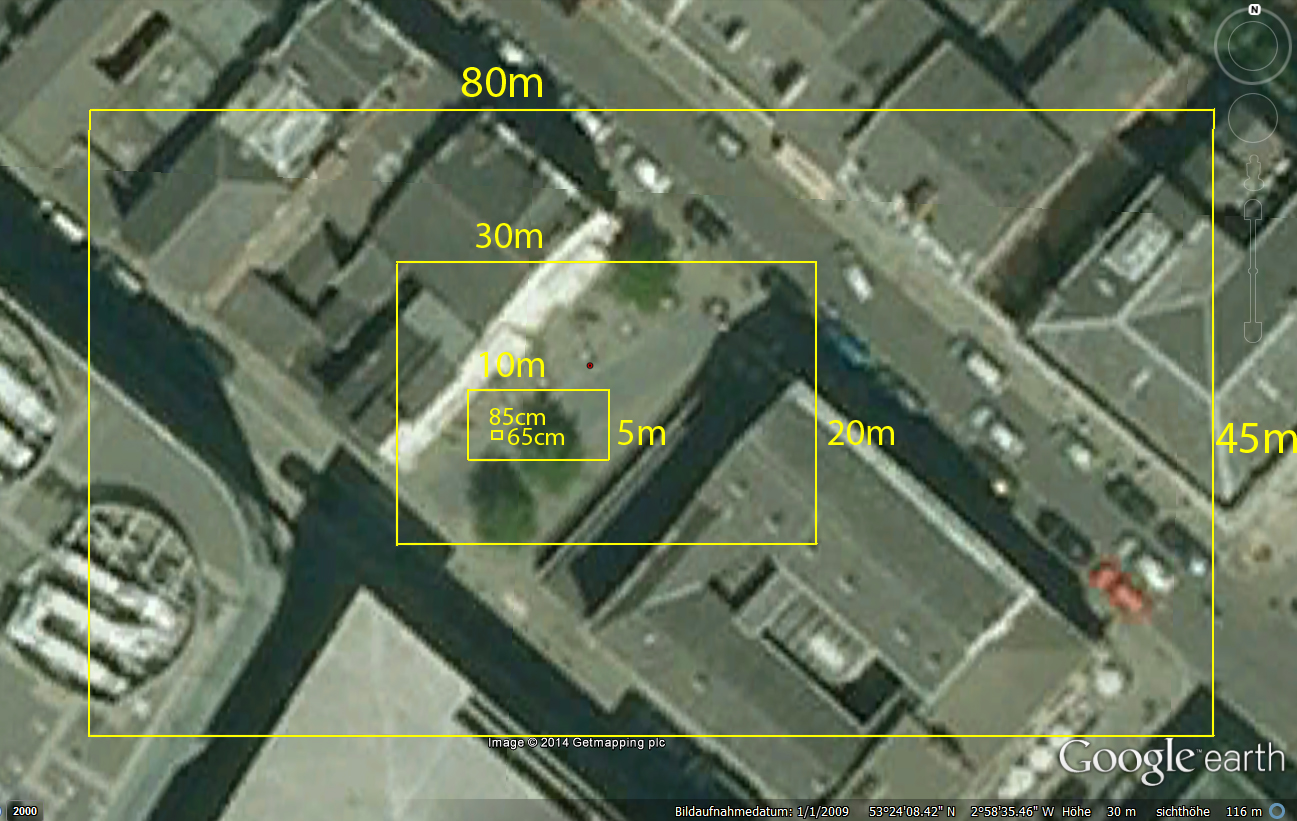
The maps above show the scales of the city Liverpool. A system design in Urban HCI has roughly the size of a housing block as seen in the lower right picture. In Media Architecture smaller sizes are also more contolled. For example, think of large scale Media Facades such as the Dexia Toxer had. The impact on the different activities of public life is much greater and might not fit with a large number of activities happening.
ProtoSettings: Plaza and Walkway
There are two main types of settings (spatial layouts) which are prototypical: Plaza and Walkway (or thoroughfare as Hespanhol calls them in [5]). Both types can mix in various ways. For example, it can be the case that plaza situations become walkway-like. How? Imagine the density of people is increasing on the plaza in the left picture below. At some point it will be difficult to walk through in a straight line. Think of being at a crowded festival. What then happens is, that certain pathes emerge within the crowd. Often there are situations in which you follow other people through the crowd in a queue. Thus a plaza does not always work as a plaza, but can become something different.
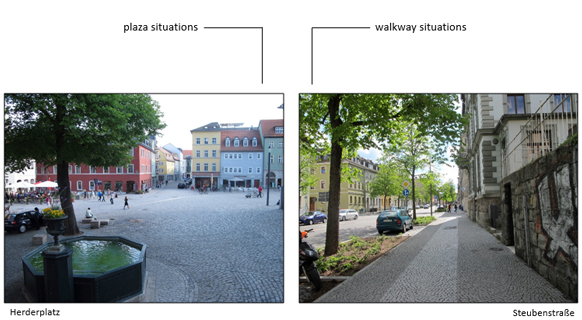
That is why I define plaza and walkway more abstract than an urban designer, architect, etc. might do. My definition is based on the human body. In particular it is based on Edward T. Hall's proxemics.
Definition walkway (1): „A setting is considered a walkway, if it is not possible for one person to walk by another person without crossing the person‘s social space.“
Definition plaza (2): „As soon as it is possible for a person to avoid the social space of others a setting is considered a plaza.“

The figure on the right shows a walkway situation (1) and a plaza situation (2) (GPS: 50.976984, 11.327791). The setting is challenging the prototypes of walkway and plaza. It shows twelve people with their intimate, personal and social space as well as their future trajectory of walkingpath. In situation (1) there are few opportunities to transform the walkway to a plaza. Per definition it is a walkway as social spaces overlap. The only opportunity to transform the walkway to a plaza-like setting might be to close street for traffic. (2) shows a situation in which a walkway is almost becomming a plaza. At the corner there is enough space to keep social spaces from overlapping. The definitions thus include dynamic aspects of public life.
Interface types: Movable, fixed and camera based
There are three main types of interface used over and over again in public installations. A number of installations use cameras capturing movement or gestures to interact with a projection facade or media architecture for display. Others use consoles or touch screens which are fixed.
The term movable was chosen to distinguish the abstracted interaction design from mobile interaction. The term mobile suggests: the interface can be taken easily to a different location, it is easy to carry, its private, belongs to a single person, is primarily used for single user interaction, etc. Movable interfaces can be large (e.g. Urban Cursor by Sebastian Campion), multiuser, unowened, etc. They are situated, rather not universal, and belong to a place they have beend designed for. They are a piece of media architecture.
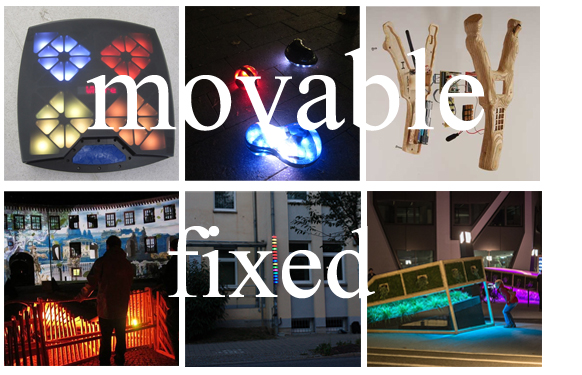
Often only one type of interface is used in an installation. However, with more sophisticated designs, mixes and blends are to expect. There are already good examples of hybrid interface types challenging these categories such as Rafael Lozano Hemmer's, Body Movies. In essence he is using camera based system, but he introduces the shadow as medium and gives the rather invisible display of the interface a better way to comprehend through observation.
Role types: Performer, participant and observer
There are four basic role types the public can be distinguished into. These should be considered when analysing but also when synthesising new media architecures.
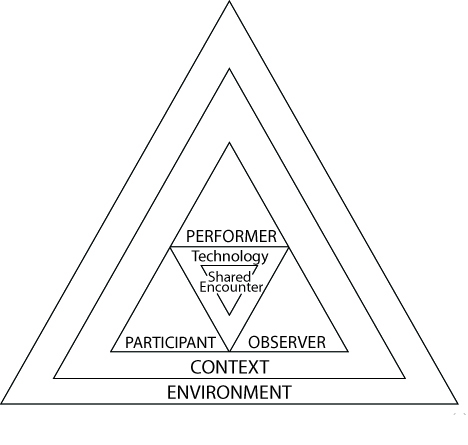
From the models categorizing public user behaviour [3, 6, 7], I propose to consolidate the terms following four roles of a user in front of a display:
- A Passer-by is a person who crosses the space without participating in any interaction, neither with the interactive system nor with other people. S/he might have perceived the interactive nature of the situation with a peripheral awareness of it, but also might have missed it.
- Observer show passive engagement in the whole situation. They might be loosely interested or immersed in the interactions. They participate in the social setting around the display by potentially interacting with others or preparing to interact with the display.
- Performers are those people who are currently interacting with the public display. After finishing the interaction and passing on to others, they become
- Participants, potentially interacting with others in front of the display or just observing the setting and the display, already knowing how the interactive system works by inference or by former use.
Display types: People as Displays
Urban space is inherently a social space we share with other people and their activities.
People observe and react to other people’s actions. Users’ and observers’ actions also
effectively function ‘as a display’.
In the theory of Urban HCI the appearance of a behaviour is treated at the same level
as other designed artefacts; like the interface itself with its hardware and software as well as
the environment of the installation. Not only the façade or projection should be considered a
display, but also the usage activity itself. Derived from Sheridan [7] and Reeve’s [6] proposed roles (performer, participant and observer),
Urban HCI distinguishes three types of 'people's display': performer display, participant display and observer display.
Aesthetically, the ‘people as displays’ concept emphasizes that a role that can be taken by a person, is controlled and shaped by the designer. Similar to theatre where costumes and activity defines the role of the actor, ‘peoples as display’ in public space contributes to the overall impression and understanding of the work. For example, by designing a user-system relation a performer display is created which again is shaping the situation
Performer Display
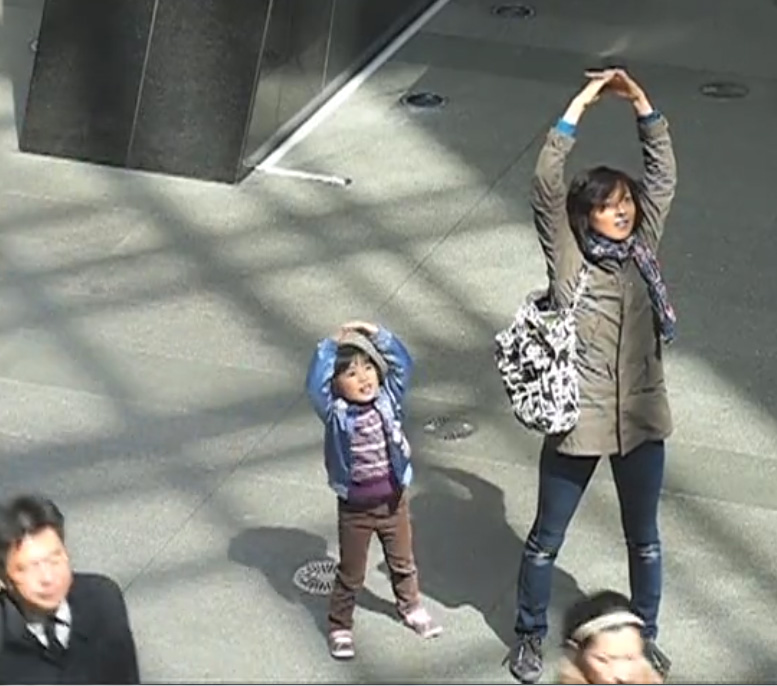
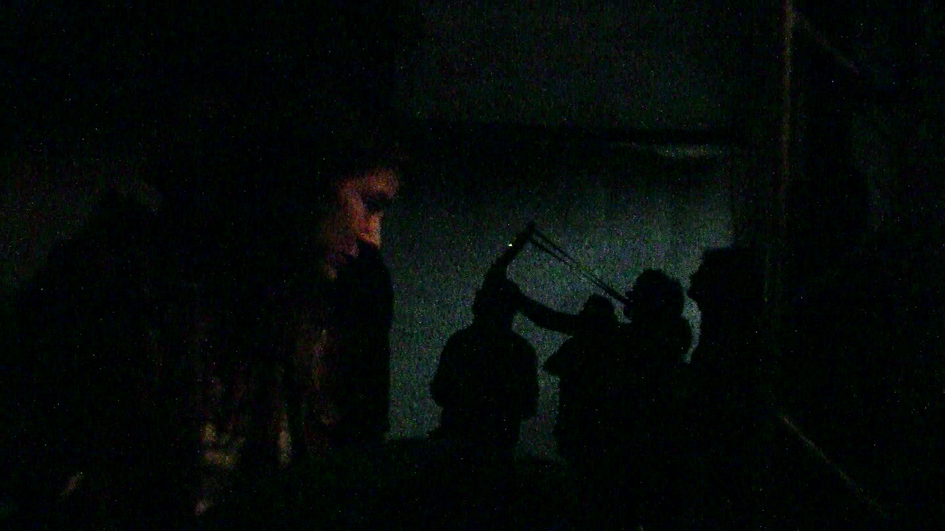
The figures above show two examples of performer displays. The performer display in the left image is a result of Chris O'Shea's interactive public display installation 'Hands from Above'. The image on the right shows how performer display's can help to show where the action is in extreme darkness. The raised pose necessary to interact with the system promotes understanding of the installation also from the fringes of an installation (the Activation Spaces explained further down).
Participant Display
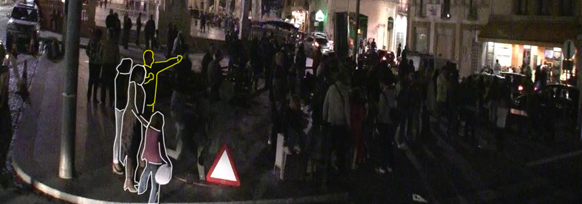
Often performer receive help from their friends or other people taking the role of a participant. These helping gestures add to the situation, as they make up a visible friendly atmosphere around the interface. Another participant displays is mimicking the performers gesture to explain to others what is going on. An example is shown in the image above. The person with the yellow outline is mimicking the gesture from the SMSlingshot intervention.
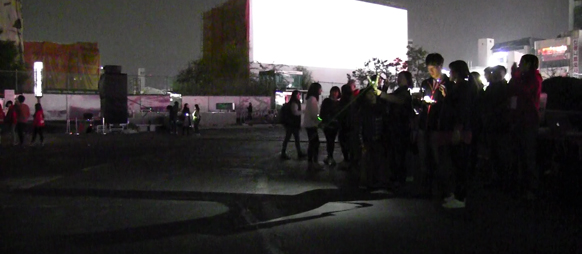
The picture above shows how a participant display is extended beyond the bodily activity of the participant. By helping the performer to see better the keys of the SMSlingshot, she is casting a large shadow of the SMSlingshot on the ground.
Observer Display
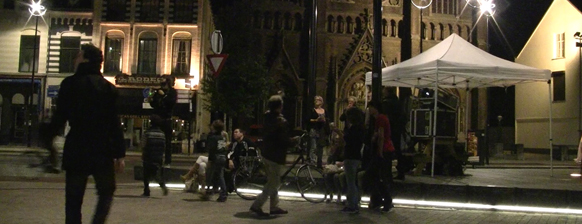
People begin to act as an observer display when they glance repeatedly in a certain direction. This makes other people eventually do the same (lower picture). It is unclear how big the impact of an observer display is and from how far it can be seen. Most of the observer displays are very subtle when not explicitly designed otherwise. But still they are recognizable and provide informative cues for other passers-by. The observer display of the people sitting on the ledge in the upper image convey sociability, an athmosphere impacting the situation design of an installation.
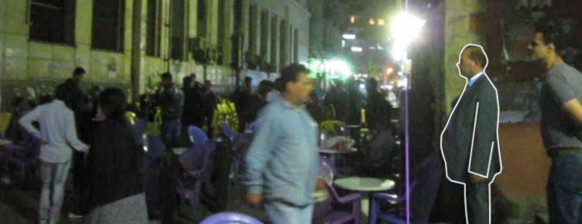
Scales of People Displays

Urban HCI Space Type Model
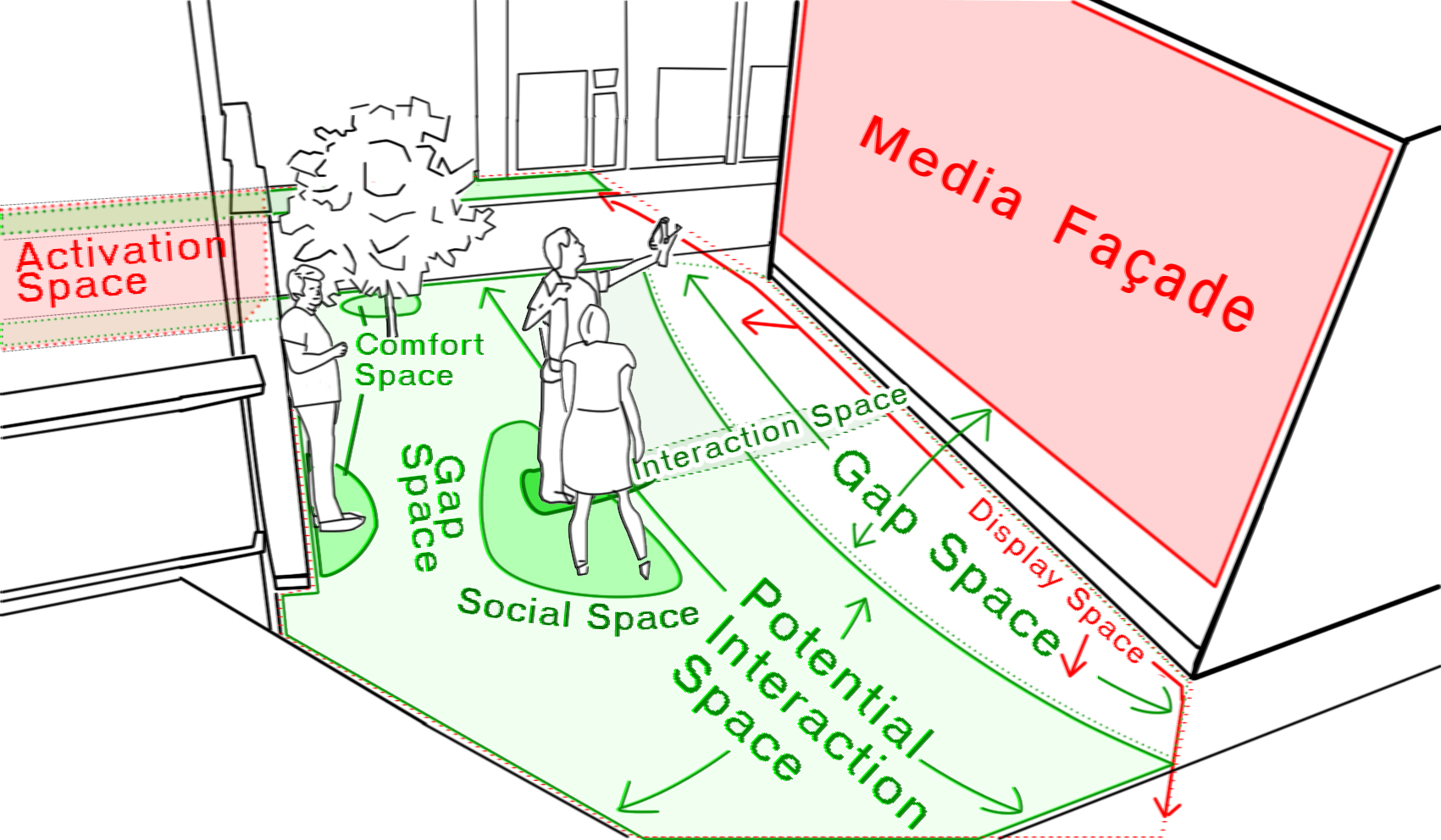
The Space Type Model comprises seven relevant spaces. These are:
- Display Spaces (DS): the areas from which a display can be seen.
- Interaction Space (IS): the space used to carry out a form of communication with the installation. It belongs to a single person, but can overlap with other people’s interaction space.
- Potential Interaction Spaces (PIS): spaces where the interaction between system and performer can potentially occur.
- Gap Spaces (GS): spaces that create distance, either between human and system or among humans.
- Social Interaction Spaces (SIS): those areas where people congregate (attracted by the system) and have a shared encounter.
- Comfort Spaces (CS): spaces that provide a sense of physical and psychological ease. Protective features like walls, pillars, trees, etc. draw people subconsciously towards them.
- Activation Spaces (AS): spaces where some displays can be seen from, often triggering curiosity, but interaction is not possible.
Situational Examples
The following images try to provide examples of the space types given above to illustrate their variety.
Gap Space Examples
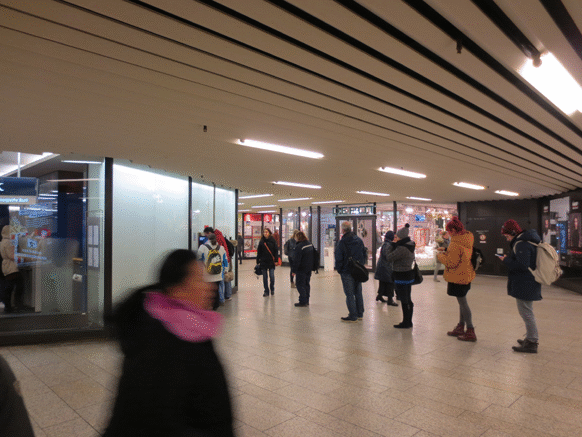
Norms attached to the use of ATMs create Gap Spaces in front of them. In this case the Gap Space is also positioned/ emerging at a useful position as a main pathway is crossing the queue.
Bassoli at al. describe this spontaneously emerging tripartite relationship between the spatial, social and design artefact in [1] as follows: "a queue for an ATM develops on a crowded pavement, positioning itself so as to leave a gap between the person at the ATM and the start of the queue. Responding to both the spatial and the social context of the in-between situation, not only does this leave room for pedestrians to pass by, but it also offers privacy for the current ATM customer. This behaviour is dynamic and transitional in nature; once the queue at the ATM has dissipated there are no traces left in the environment informing the future queues of how they should form; knowing how to queue requires local knowledge."
Activation Space Examples
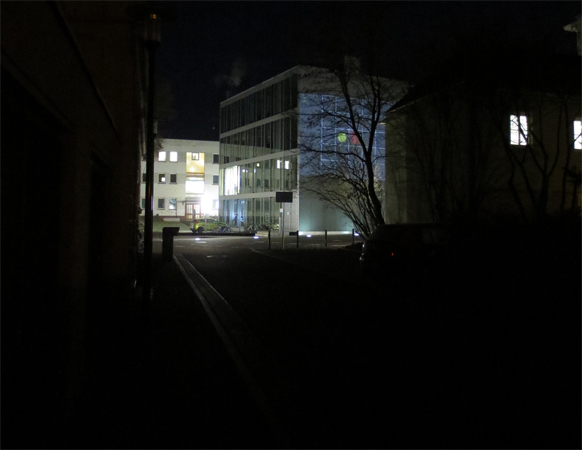
The Media Facade is partly visible, but the cause of changing content is hidden. Corresponding 'People Displays' can not be seen.
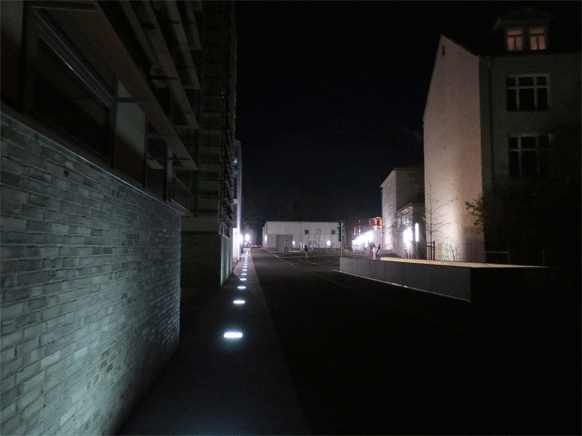
'People Display' can be seen, but Media Facade content is hidden. Changing side of the walkway easily gives visual access to the facade. It is likely that passers by change their usual path of walk. It is the decision of the system designer to allow or prevent this option. The environment is subject of the system design on the same level as interface and interaction design is.
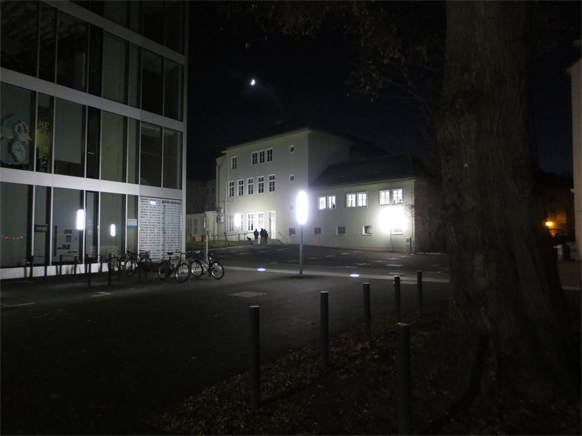
'People Display' can be seen, but Media Facade content is hidden. Visual access can not be gained till own position is changed by a longer walk. Some people will not take the effort to do the detour. Others will not infer from the 'People Display' the existance of another display being part of the installaiton. They might also pass the situation too fast so that it is impossible to perceive the peoples display. For example, the poses are very subtle at the moment and the expressive part was missed by the passer-by.
References
[1] Arianna Bassoli, Johanna Brewer and Karen Martin. (2008): Situating In-betweenness. Frank Eckardt, Jens Geelhaar, Laura Colini, Konstantinos Chorianopoulos, Katharine S. Willis, and Ralf Hennig (Eds.), Mediacity: Situations, Practices and Encounters, 41-55.
[2] McCullough, M. (2005): Digital Ground. Cambridge: MIT Press.
[3] Finke, M., et al. Lessons learned: game design for large public displays. In Proc. of
DIMEA 2008, ACM (2008).
[4] Fischer, P.T., Hornecker, E. (2017): Media Architecture for Shared Encounters. In: Wiethoff, A., Hußmann, H. (Eds.) Media Architecture. Using Information and Media as Construction Material. de Gruyter, Berlin/Boston, Age of Acess Series Vol. 8. 2017. pp. 5-23.
[5] Hespanhol L., Dalsgaard P. Social Interaction Design Patterns for Urban Media Architecture. Human-Computer Interaction, Stringer, 596-613, (2015).
[6] Reeves, S., et al. Designing the spectator experience. In Proc. of CHI, ACM (2005).
[7] Sheridan, J. G., et al. Understanding Interaction in Ubiquitous Guerilla Performances in Playful Arenas. People and Computers, 3-18, (2005).
